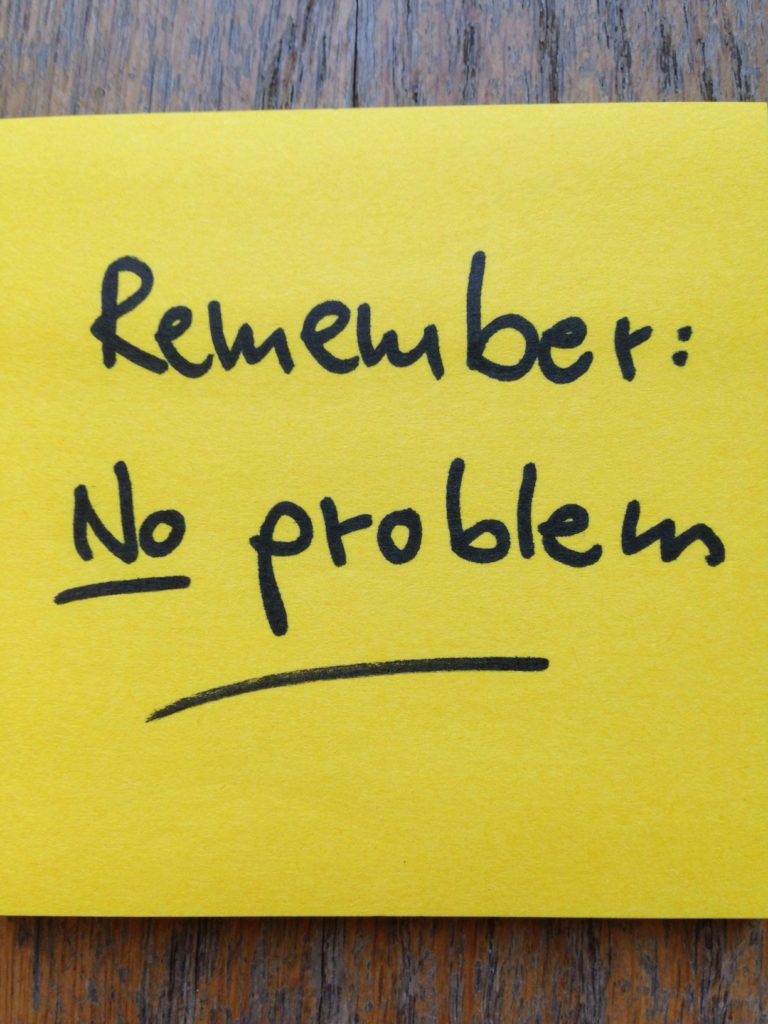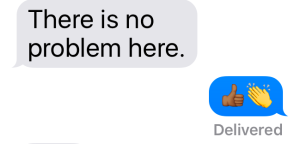There is no problem here
 How a simple statement can help to calm down the mind (and nervous system) in surprising ways.
How a simple statement can help to calm down the mind (and nervous system) in surprising ways.
I’m a fixer. There you have it. All these years of “letting things be as they are”, all these years of training and I’m still a fixer. Are you, too?
I was trained as a physician (classic fixer profession) and of course I was a fixer way before the possibility of medical school ever crossed my mind. Isn’t this one way how we choose our profession? We get more training in something we were inclined to to start with?
Maybe you don’t even know why being a fixer could be seen as a problem – or something that needs confessing. Isn’t that a good thing? Didn’t that get us somewhere in life? Yes, it did. But like with many patterns they often also have their shadow sides if unchecked.
In mindfulness or vipassana (Insight Meditation) fixing has a pretty bad rep (which of course is especially true for a mindfulness teacher ;)). Because we actually believe that nobody needs fixing! We believe that everybody is already whole and complete – and just needs to remember that.
The “mantra”
Last summer I had a practice check-in with one of my teacher-mentors. I don’t even remember what I shared with him but he must have picked up on a vibe that made him say: “Christiane, I would suggest you start working with a mantra.” Sure, I was all ears and probably expected some pithy line from the Buddhist scriptures. Maybe something from the Majjima Nikaya? Got it!
But instead he said “Here is the mantra: There is no problem here.”
Uh – what?
He smiled kindly and said: “Give it a try.”
And so I did.
- Low on milk in the fridge and no time to get a new carton before breakfast for our three kids? Check.
- Those three kids making me want to scream and throw something in their direction because they won’t neither clear the table nor change into their PJs in a remotely timely manner? Check.
- A work thing still being in disarray after many failed attempts? Check.
- A dear friend going through a horrible break-up which breaks my heart for her and her children and makes me feel so helpless? Check.
- The strong sense that I can’t ever get through my to-do list? Check, check and check.
The body on problem mode
I was blown away how much of my time – most of it? – I spend in some form of fixing or problem tackling mode. Endless! And usually several problems are vying to be solved at the same time. Don’t get me wrong, I don’t think that tackling problems is a problem in itself – I actually take pleasure in my ability to do so – BUT.
 But I noticed that it does do a number on my nervous system. It makes my shoulders tight, my jaw set, my forehead frowned. I’m pretty sure it also elevates my blood pressure and heart rate and pumps a steady dose of adrenaline and cortisol through my blood stream. I know: all signs of a stress reaction.
But I noticed that it does do a number on my nervous system. It makes my shoulders tight, my jaw set, my forehead frowned. I’m pretty sure it also elevates my blood pressure and heart rate and pumps a steady dose of adrenaline and cortisol through my blood stream. I know: all signs of a stress reaction.
Remembering the mantra and repeatedly stating it in a friendly manner reminds me that – in most cases – right in that moment there really isn’t a problem, or at least not one that would justify jeopardizing my health by overdosing on stress hormones.
The effect
Listening to that mantra lets something in me relax. It lets me see more clearly. I feel more spacious instead of tight and tense. And interestingly enough that in turn often enables me to discern if there is some action I need to take right now or if something needs to be done later – or maybe none at all.
I have more ease around my family and work and also to willing to show up for the bigger picture problems around us. Interestingly, the more calm my system is the more I am willing to roll up my sleeves.
And here is another note-worthy insight that came out of the “there is no problem here”-practice: I have become more aware of how much I identify with the fixer. A substantial part of my identity seems to be tied up in being a fixer, a problem solver. I’m in charge, I can handle this, I make the day. I do get quite an ego-boost out of being a fixer! Now that is something else to practice with. Because: Who am I if I’m not a fixer?
If this topic rings a bell for you, and I suspect it does if you have read this far, I invite you to give the mantra “there is no problem here” a try, too. In a moment of tension or stress, repeat it softly to yourself several times. And you might want to –for this moment- “pretend” that there truly isn’t something that needs fixing right in this instant. What happens?
I would love to hear from you in the comments below.
Love, Christiane
